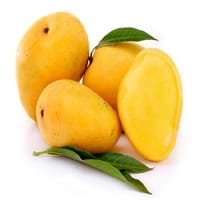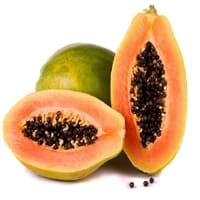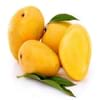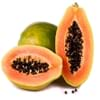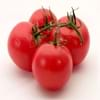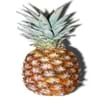Health Benefits
Cancer prevention, Cures fatigue, Heart care, Prevents strokes
Arthritis prevention, Asthma treatment, Cancer prevention, Heart care, Prevents macular degeneration, Prevents rheumatoid
General Benefits
Anti oxidant properties, Boosts immune system, Controls blood pressure, Digestive aid, Improves eye vision, Maintains healthy cholesterol level
Anti-inflammatory properties, Boosts immune system, Digestive aid, Healing of wounds, Maintains healthy cholesterol level, Strengthens bones
Skin Benefits
Anti-aging benefits, Brightens and lightens complexion, Skin cleansing, Skin rejuvenation, Treatment of acne, Treatment of blackheads, Treatment of dark spots
Anti-aging benefits, Hydrates skin, Skin revitalization, Treatment of acne, Treatment of dark spots
Hair Benefits
Good conditioner, Prevents hair loss, Treatment of dandruff
Good conditioner, Promotes longer and healthier hair, Softening mask, Treatment of dandruff
Allergy Symptoms
Abdominal pains, Breathing difficulty, Diarrhea, Runny nose, Sneezing, Swelling of mouth, tongue or lips, Watery eyes
Abdominal pains, Carotenemia on excessive consumtion, Latex Allergy
Side Effects
Increase in blood sugar level, Diarrhoea, Weight gain
Allergic reaction, Skin problems, Possibly unsafe during pregnancy
Best Time to Eat
Don't consume at night and before bed, Eat the fresh ones, avoid mixing with any other foods, don't eat after meal., Morning time (before lunch)
As a snack in the late afternoon, Don't consume at night and before bed, Don't eat after meal
Vitamin B5 (Pantothenic Acid)
Vitamin C (Ascorbic Acid)
Vitamin K (Phyllochinone)
Calories in Fresh Fruit with Peel
Not Available
Not Available
Calories in Fresh Fruit without Peel
Type
Tree fruit
Melon, Tree fruit
Season
Spring, Summer
All seasons
Varieties
Alphonso, Valencia Pride, Badami, Chaunsa, Nam Dok Mai, Glenn, Sindhri, Madame Francique, Kesar and Keitt
Coorg Honey Dew, Pusa Dwarf, Pusa Giant, Pusa Majesty, Pusa Delicious, Pusa Dwarf, Solo, Ranchi, Taiwan-785 and Taiwan-786
Color
Orange, Red, Yellow
Orange, Yellow
Inside Color
Yellow
Orange
Taste
Sweet
Luscious, Sweet
Origin
Southern Asia
Mexico, Central America
Soil Type
Clay, Loam, Sand
Rocky, Sandy, Well-drained
Climatic Conditions
Humid, Warm to hot climate
Warm, Without frosts
Facts about
- A mango tree can bear fruits even after the age of 300 years.
- Height of a mango tree can be as high as 100 feet.
- In India, mango is known as a symbol of love. Also, a mango basket is considered as the sign of friendship.
- Papaya seeds show contraceptive effects in male monkeys.
- Their seeds are used as a replacement for black pepper in some nations due to peppery taste.
- Papaya is known by funny names like paw paw or papaw and the mamao.
Other Countries
Bangladesh, Brazil, China, Indonesia, Mexico, Nigeria, Pakistan, Philippines, Thailand
Brazil, Indonesia, Mexico, Nigeria
Top Importer
United States of America
United States of America
Top Exporter
Mexico
Mexico
Botanical Name
Mangifera Indica
Carica papaya
Synonym
Not Available
Not Available
Subkingdom
Tracheobionta
Tracheobionta
Division
Magnoliophyta
Magnoliophyta
Class
Magnoliopsida
Magnoliopsida
Subclass
Rosidae
Dillenhidae
Order
Sapindales
Brassicales
Family
Anacardiaceae
Caricaceae
Species
M. indica
C. papaya
Generic Group
Cashew
Papaya
Difference Between Mango and Papaya
We might think that Mango and Papaya are similar with respect to nutritional value and health benefits. But the nutrient content of both fruits is different. Mango and Papaya Facts such as their taste, shape, color, and size are also distinct. The difference between Mango and Papaya is explained here.
The amount of calories in 100 gm of fresh Mango and Papaya with peel is Not Available and Not Available and the amount of calories without peel is 60.00 kcal and 43.00 kcal respectively. Thus, Mango and Papaya belong to Low Calorie Fruits and Low Calorie Fruits category.These fruits might or might not differ with respect to their scientific classification. The order of Mango and Papaya is Sapindales and Brassicales respectively. Mango belongs to Anacardiaceae family and Papaya belongs to Caricaceae family. Mango belongs to Mangifera genus of M. indica species and Papaya belongs to Carica genus of C. papaya species. Beings plants, both fruits belong to Plantae Kingdom.
